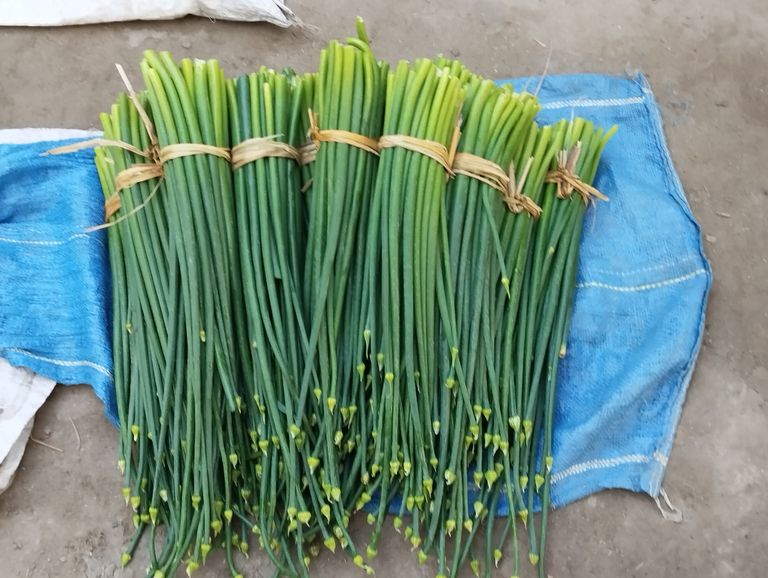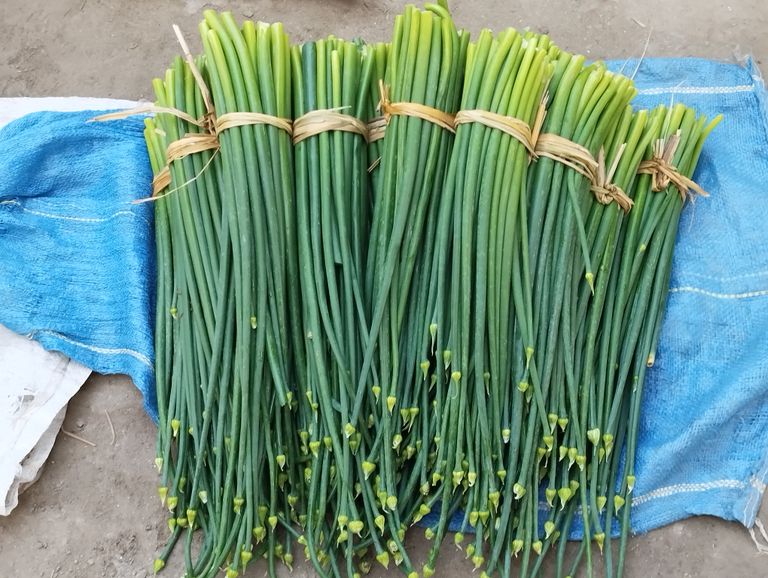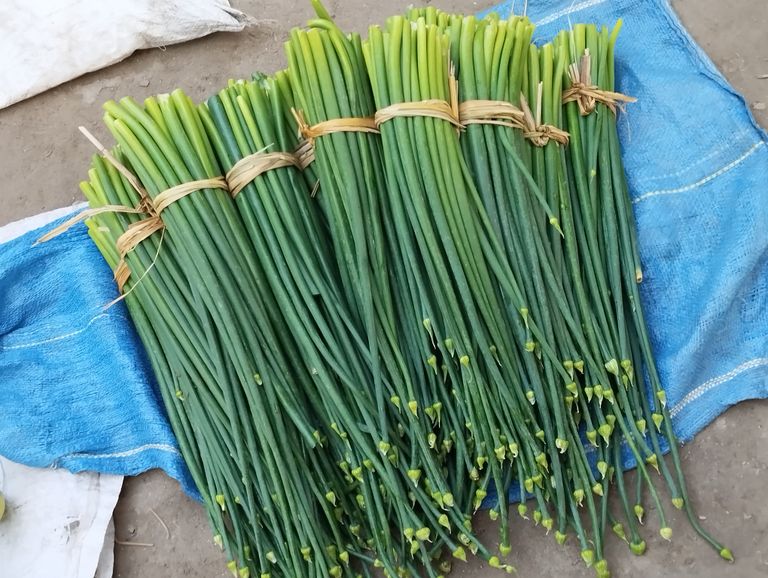
How to Make Onion Peels Curry Peyajer Kholer Tarkari.
Cooking with onion peels is an innovative and eco-friendly way to minimize kitchen waste while creating a nutritious and flavorful dish. Onion peels are rich in antioxidants and can enhance the taste of your meal. This unique recipe, rooted in Bengali cuisine, transforms a humble ingredient into a delicious curry. Here’s how you can prepare it at home.
Ingredients
To make onion peel curry, you will need:
Onion peels: From 4-5 medium-sized onions (washed and clean)
Potatoes: 1 medium, diced
Tomatoes: 1 medium, chopped
Green chilies: 2-3, slit
Mustard seeds: ½ tsp
Nigella seeds (kalonji): ½ tsp
Turmeric powder: ½ tsp
Red chili powder: ½ tsp (optional)
Cumin powder: ½ tsp
Salt: To taste
Sugar: ½ tsp
Mustard oil (or any cooking oil): 2 tbsp
Water: 1 cup
Fresh coriander leaves: For garnish
Preparation Steps
Step 1: Cleaning the Onion Peels
- Separate the dry and flaky outer layers of the onion peels from the softer, inner layers.
- Rinse the onion peels thoroughly under running water to remove any dirt or residues.
Step 2: Prepping the Ingredients
Dice the potato and chop the tomatoes.
Slit the green chilies.
Step 3: Cooking the Curry
- Heat the Oil
In a pan, heat mustard oil until it begins to smoke lightly. Lower the flame.
- Add the Tempering
Add mustard seeds and nigella seeds to the hot oil. Let them crackle for a few seconds.
- Sauté the Potatoes
Add the diced potatoes and sauté them until golden.
- Add Tomatoes and Chilies
Toss in the chopped tomatoes and green chilies. Cook until the tomatoes turn soft and mushy.
- Spice it Up
Add turmeric powder, red chili powder, cumin powder, salt, and sugar. Stir well to mix the spices evenly.
- Add Onion Peels
Gently fold in the cleaned onion peels. Sauté for 2-3 minutes until they soften and absorb the spices.
- Simmer the Curry
Add a cup of water and bring it to a boil. Lower the heat and cover the pan. Let it simmer for 8-10 minutes until the potatoes are cooked and the curry thickens.
- Final Touch
Taste and adjust the seasoning. Garnish with freshly chopped coriander leaves.
Serving Suggestions
Serve the onion peel curry hot with steamed rice or flatbreads like roti or paratha. It pairs well with a side of lentils (dal) for a wholesome meal.
Why Try This Recipe?
Sustainability: Reduces kitchen waste.
Nutritious: Onion peels are packed with antioxidants, vitamins, and dietary fiber.
Budget-Friendly: Makes the most out of every ingredient in your kitchen.
Flavorful: The combination of spices brings out a unique and earthy taste.
Tips for Best Results:
- Avoid using overly dry or discolored onion peels.
- If you’re hesitant about the taste, start with a small batch.
- Experiment with other vegetables like eggplants or ridge gourds for added texture.


Cultivation of Kalijira Onion (Black Onion Seed)
Kalijira onion, also known as black onion seed, is a popular spice crop in South Asia, especially in Bangladesh and India. It is widely used in culinary dishes and medicinal applications. Cultivating kalijira onion requires proper planning, soil preparation, and care. This blog provides a detailed guide to cultivating kalijira onion effectively.
- Importance of Kalijira Onion
Kalijira onion seeds are rich in essential oils, vitamins, and antioxidants. They are commonly used as a seasoning in curries, bread, and pickles. Moreover, the medicinal properties of kalijira seeds, such as boosting immunity and aiding digestion, have increased their demand in the global market.
- Climate and Soil Requirements
Climate:
Kalijira onion grows best in tropical and subtropical climates.
The ideal temperature for cultivation ranges between 20°C and 30°C.
It requires 6-8 hours of sunlight daily for optimal growth.
Soil:
Well-drained loamy or sandy loam soil is ideal.
The soil pH should range from 6.0 to 7.0.
Ensure the soil is rich in organic matter. Add compost or well-rotted manure for better fertility.
Land Preparation
Plowing: Plow the land 3-4 times to make it fine and loose.
- Leveling: Level the field to ensure proper drainage.
- Fertilization: Apply organic manure (10-15 tons per hectare) during the final plowing.
- Seed Selection and Sowing
Seed Selection:
Use high-quality, disease-free kalijira onion seeds.
Certified seeds from reputable sources ensure better germination and yield.
Seed Treatment:
Soak the seeds in lukewarm water mixed with fungicide for 6-8 hours to prevent fungal infections.
Sowing Time:
The best time for sowing is from October to November, depending on the local climate.
Sowing Method:
- Spacing: Maintain a spacing of 15-20 cm between rows and 8-10 cm between plants.
- Depth: Sow seeds at a depth of 1-2 cm.
- Watering: Lightly water the soil after sowing.
- Irrigation
Irrigate the field immediately after sowing.
Subsequent irrigation should be done every 7-10 days.
Reduce watering during the bulb formation stage to avoid rotting.
Fertilizer Management
Basal Dose: Apply 50-60 kg of nitrogen, 30-40 kg of phosphorus, and 30-40 kg of potassium per hectare during land preparation.
- Top Dressing: Apply additional nitrogen in two split doses: 30 days after sowing and at the bulb development stage.
- Weed and Pest Management
Weed Control:
Regular weeding is necessary to prevent competition for nutrients.
Mulching with straw or dry leaves can help suppress weeds and retain moisture.
Pests and Diseases:
Common Pests: Thrips and onion maggots. Use organic insecticides or neem oil for control.
Common Diseases: Leaf blight and downy mildew. Spray fungicides like mancozeb or copper oxychloride as preventive measures.
- Harvesting
Kalijira onions are ready for harvest 100-120 days after sowing.
Harvest the bulbs when the tops start drying and bending over.
Pull out the plants gently, allowing the bulbs to dry in the field for 3-4 days.
- Post-Harvest Management
Drying:
Cure the harvested bulbs under shade for 10-15 days to reduce moisture content.
Storage:
Store the dried bulbs in a cool, dry place with proper ventilation.
Use jute bags or mesh bags to prevent fungal attacks.
Seed Collection:
If growing for seeds, leave some healthy plants to mature.
Harvest the seed heads once they turn brown, and dry them thoroughly before storage.
- Yield
The average yield of kalijira onion is around 8-10 tons per hectare, depending on the variety and cultivation practices.
- Economic Benefits
Kalijira onion seeds have a high market demand, both locally and internationally.
By following proper cultivation techniques, farmers can ensure higher profits.
Cultivating kalijira onion is an excellent way for farmers to diversify their crops and boost income. With careful attention to soil preparation, pest control, and harvesting techniques, you can achieve a bountiful yield. By meeting the growing demand for this valuable spice, you also contribute to the agricultural economy.

Managing Black Mold Disease in Onions: A Comprehensive Guide
Onions are a staple crop in many countries, cherished for their versatility and flavor. However, they are susceptible to various diseases, including black mold disease, caused by the fungus Aspergillus niger. This disease not only reduces the yield but also affects the quality of harvested onions. In this blog, we will discuss the causes, symptoms, preventive measures, and management strategies for black mold disease in onions.
What is Black Mold Disease?
Black mold disease in onions is caused by the fungus Aspergillus niger. This pathogen thrives in warm and humid conditions, particularly during storage or when the onions are not properly dried. The disease primarily affects the bulbs, leading to decay and rendering them unmarketable.
Symptoms of Black Mold Disease
Identifying the symptoms early is crucial for managing black mold disease effectively. The common symptoms include:
- Black Discoloration: A black, powdery mold appears on the surface of onion bulbs, often near the neck or on damaged areas.
- Softening of Bulbs: Affected bulbs become soft and start to rot.
- Odor: In advanced stages, a foul odor may develop due to decay.
- Reduced Shelf Life: Onions infected with black mold deteriorate quickly, even under normal storage conditions.
Causes and Spread
- Environmental Conditions: Warm and humid weather promotes the growth of Aspergillus niger.
- Harvesting Practices: Improper curing or mechanical injuries during harvesting provide entry points for the fungus.
- Storage Issues: High humidity, inadequate ventilation, and poor sanitation in storage facilities facilitate the spread of black mold.
- Contaminated Soil: The fungus can survive in soil and infect onions through their roots.
Preventive Measures
Prevention is the best approach to manage black mold disease. Implement these strategies to protect your onion crop:
- Seed Selection: Use disease-free and treated seeds to minimize initial contamination.
- Crop Rotation: Avoid planting onions or related crops in the same field consecutively to reduce fungal buildup in the soil.
- Proper Harvesting: Handle onions carefully to avoid bruising or mechanical injuries.
- Curing: Allow onions to cure thoroughly after harvesting. Proper curing reduces moisture content, making it less conducive for fungal growth.
- Storage Conditions:
Maintain low humidity levels (60-70%).
Ensure proper ventilation to avoid moisture buildup.
Store onions at an optimal temperature of 0-4°C.
Management Strategies
If black mold disease is detected, take immediate action to minimize its impact:
- Chemical Control:
Apply fungicides such as thiophanate-methyl or carbendazim during bulb formation and after harvesting.
Always follow the recommended dosage and application guidelines to avoid residue issues.
- Biological Control:
Use antagonistic fungi like Trichoderma spp. to suppress Aspergillus niger.
- Post-Harvest Treatment:
Treat onions with hot water (around 50°C) to kill fungal spores.
Ensure bulbs are completely dry before storage.
- Sanitation:
Clean storage facilities thoroughly before use.
Dispose of infected onions promptly to prevent the spread of the disease.
Economic Impact of Black Mold Disease
Black mold can cause significant economic losses to farmers and traders. Reduced yield, poor quality, and decreased market value affect profitability. Furthermore, the disease can damage a farmer's reputation if infected produce reaches consumers.
Black mold disease in onions is a serious threat that requires a proactive approach to management. By adopting preventive measures, practicing proper post-harvest handling, and employing effective control strategies, farmers can protect their crops and ensure a profitable harvest. Staying informed about the disease and monitoring crops regularly are key to minimizing its impact.
By investing in integrated pest management practices, farmers can sustainably manage black mold disease and maintain the quality of their onion produce for both local and international markets.

Health Benefits of Eating Onions
Onions, a staple in almost every kitchen worldwide, are more than just a flavorful addition to meals. They are a powerhouse of nutrients with numerous health benefits. Rich in vitamins, minerals, and antioxidants, onions have been used for centuries in traditional medicine. Here’s a detailed look at the benefits of consuming onions:
- Rich in Nutrients
Onions are low in calories but packed with essential nutrients. They are an excellent source of vitamin C, vitamin B6, manganese, and dietary fiber. Additionally, onions contain small amounts of iron, folate, and potassium, which are vital for overall health.
- Boosts Immunity
The high vitamin C content in onions helps strengthen the immune system. Vitamin C stimulates the production of white blood cells and fights against free radicals, keeping infections at bay.
- Anti-inflammatory Properties
Onions contain compounds like quercetin and sulfur, which have anti-inflammatory effects. These compounds help reduce inflammation in the body, making onions beneficial for those suffering from arthritis or other inflammatory conditions.
- Heart Health
Eating onions regularly can significantly improve heart health. They help lower cholesterol levels, reduce blood pressure, and prevent the hardening of arteries (atherosclerosis). The antioxidants in onions combat oxidative stress, reducing the risk of heart diseases.
- Aids in Digestion
Onions are a good source of dietary fiber, which promotes healthy digestion. The natural prebiotics in onions help nourish beneficial gut bacteria, improving digestive health and preventing constipation.
- Regulates Blood Sugar Levels
Onions have compounds that can help lower blood sugar levels, making them a valuable addition to the diet of those with diabetes. Studies have shown that the sulfur compounds in onions increase insulin production and improve glucose tolerance.
- Supports Bone Health
Onions are rich in compounds that enhance bone density and strength. Regular consumption may help prevent bone disorders like osteoporosis, especially in postmenopausal women.
- Cancer Prevention
Onions are known for their cancer-fighting properties. They contain compounds like flavonoids and sulfur, which have been linked to reducing the risk of certain cancers, including stomach, colorectal, and prostate cancer. The antioxidants in onions protect cells from damage and inhibit the growth of cancerous cells.
- Improves Skin and Hair Health
The antioxidants and vitamins in onions contribute to healthy skin and hair. Applying onion juice to the scalp can promote hair growth and reduce dandruff. For the skin, onions help combat acne and reduce signs of aging due to their antioxidant properties.
- Detoxifies the Body
Onions are natural detoxifiers. The sulfur compounds aid in eliminating toxins and heavy metals from the body, promoting liver health.
- Promotes Respiratory Health
Onions have been traditionally used to alleviate respiratory conditions like asthma and bronchitis. The anti-inflammatory and antibacterial properties help clear airways, making breathing easier.
How to Include Onions in Your Diet
Raw: Add finely chopped onions to salads or sandwiches for a crunchy texture.
Cooked: Sauté onions with vegetables, meat, or grains to enhance flavor.
Juice: Drink onion juice mixed with honey for cough relief.
Pickled: Enjoy pickled onions as a tangy side dish.
Precautions
While onions are generally safe for consumption, excessive intake may cause digestive discomfort in some people. If you have a known allergy to onions or related plants, avoid them.
Onions are a versatile and nutritious food that offers numerous health benefits. Incorporating them into your diet can improve your overall health and protect against various diseases. Whether eaten raw, cooked, or in juice form, onions are a valuable addition to a balanced diet.
Health Benefits of Eating Onions
Onions, a staple in almost every kitchen worldwide, are more than just a flavorful addition to meals. They are a powerhouse of nutrients with numerous health benefits. Rich in vitamins, minerals, and antioxidants, onions have been used for centuries in traditional medicine. Here’s a detailed look at the benefits of consuming onions:
- Rich in Nutrients
Onions are low in calories but packed with essential nutrients. They are an excellent source of vitamin C, vitamin B6, manganese, and dietary fiber. Additionally, onions contain small amounts of iron, folate, and potassium, which are vital for overall health.
- Boosts Immunity
The high vitamin C content in onions helps strengthen the immune system. Vitamin C stimulates the production of white blood cells and fights against free radicals, keeping infections at bay.
- Anti-inflammatory Properties
Onions contain compounds like quercetin and sulfur, which have anti-inflammatory effects. These compounds help reduce inflammation in the body, making onions beneficial for those suffering from arthritis or other inflammatory conditions.
- Heart Health
Eating onions regularly can significantly improve heart health. They help lower cholesterol levels, reduce blood pressure, and prevent the hardening of arteries (atherosclerosis). The antioxidants in onions combat oxidative stress, reducing the risk of heart diseases.
- Aids in Digestion
Onions are a good source of dietary fiber, which promotes healthy digestion. The natural prebiotics in onions help nourish beneficial gut bacteria, improving digestive health and preventing constipation.
- Regulates Blood Sugar Levels
Onions have compounds that can help lower blood sugar levels, making them a valuable addition to the diet of those with diabetes. Studies have shown that the sulfur compounds in onions increase insulin production and improve glucose tolerance.
- Supports Bone Health
Onions are rich in compounds that enhance bone density and strength. Regular consumption may help prevent bone disorders like osteoporosis, especially in postmenopausal women.
- Cancer Prevention
Onions are known for their cancer-fighting properties. They contain compounds like flavonoids and sulfur, which have been linked to reducing the risk of certain cancers, including stomach, colorectal, and prostate cancer. The antioxidants in onions protect cells from damage and inhibit the growth of cancerous cells.
- Improves Skin and Hair Health
The antioxidants and vitamins in onions contribute to healthy skin and hair. Applying onion juice to the scalp can promote hair growth and reduce dandruff. For the skin, onions help combat acne and reduce signs of aging due to their antioxidant properties.
- Detoxifies the Body
Onions are natural detoxifiers. The sulfur compounds aid in eliminating toxins and heavy metals from the body, promoting liver health.
- Promotes Respiratory Health
Onions have been traditionally used to alleviate respiratory conditions like asthma and bronchitis. The anti-inflammatory and antibacterial properties help clear airways, making breathing easier.
How to Include Onions in Your Diet
Raw: Add finely chopped onions to salads or sandwiches for a crunchy texture.
Cooked: Sauté onions with vegetables, meat, or grains to enhance flavor.
Juice: Drink onion juice mixed with honey for cough relief.
Pickled: Enjoy pickled onions as a tangy side dish.
Precautions
While onions are generally safe for consumption, excessive intake may cause digestive discomfort in some people. If you have a known allergy to onions or related plants, avoid them.